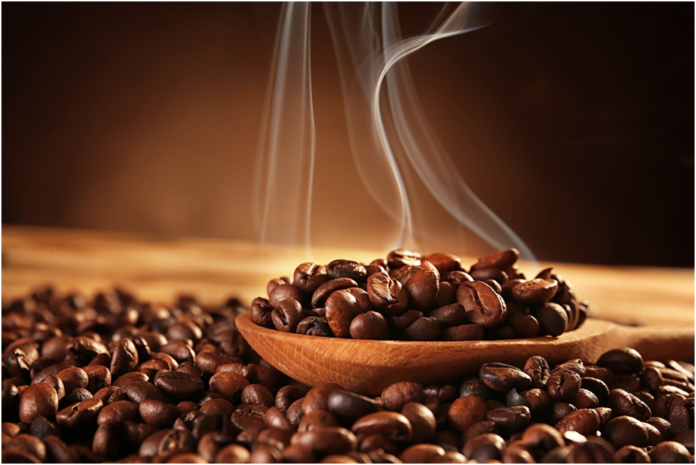Explore the intricate flavors of high-quality coffee from around the world, brewed and enjoyed as you prefer.
That’s the promise of high-quality coffee, but to join the ranks of the connoisseurs and devotees, you’ll need to learn a thing or two about the basic types of whole bean vs ground coffee.
Still, trying to figure out where to begin? We’ve got a few essential “basics” to help you on your way. Keep reading for everything you need to know about your cup of joe.
Physical Form
Whole-bean coffee is made from coffee beans that have been roasted and left in their whole form. This is ideal for grinding each cup of coffee fresh, as no flavor or aroma has been lost from pre-ground beans. When ground, the surface area of the beans can increase the contact with water and result in a richer, more flavorful cup.
By comparison, ground coffee is irregularly ground coffee beans pre-ground for convenience and easier brewing. The downside to using pre-ground coffee is that the beans lose their flavor and aroma quickly since they have been exposed to the air after being ground.
Grind Size
Whole bean espresso is ground immediately before brewing. Upon grinding, the particles of coffee become more numerous, thus increasing the surface area available for extraction. It also enables the release of flavorful oils when soluble solids are exposed to heat and water.
On the other hand, ground coffee is made from beans that have been ground many days to weeks ahead of time, resulting in a steep drop in flavor, aroma, and overall quality. The grind size of ground coffee is usually quite coarse, limiting the maximum extraction of anything other than the most basic caffeine and sugar compounds.
This can result in an unbalanced brew that is slightly acidic and lacking in body or sweetness; an espresso made with a finer grind could produce a much more complex cup.
Shelf Life
Whole bean coffee retains its flavor, aroma, and freshness much longer than its ground counterpart. It can last up to 9 months if stored in an airtight container. However, ground coffee typically only lasts up to 1 month when kept airtight, so it is important to remember to use it quickly before it starts to lose its freshness.
Additionally, whole-bean coffee can be ground for each use, ensuring maximum freshness with each serving. Ground coffee provides different flexibility because it has already gone through grinding.
Aroma and Flavor
Whole bean coffee has a stronger and more durable aroma due to its oils being contained within its original form, which resists heat and oxidation better than the same oils found in ground coffee. Whole bean coffee usually has a more robust flavor since it is not oxidized or exposed to oxygen as much as its ground counterpart.
When a whole bean is a ground, its flavor is dulled. Ground coffee also has more of a dulled flavor because it takes on humidity and oxygen after it is ground, creating a slightly muted flavor. The heat used during grinding also reduces the aromatic compounds leading to a slightly different flavor profile.
For example, Guatemalan coffee beans have a unique aroma, full of sweet and caramel tones, which are most intense when the beans are in their whole form. When the beans are ground, the aroma dissipates, and other distinct flavors emerge. With this in mind, buy Guatemalan coffee beans from a trusted source for the best results.
Brewing Methods
Generally, whole-bean coffee produces more complex and full-bodied flavors than pre-ground coffee. This is because once ground, the coffee loses its flavor as it oxidizes. As a result, grinding coffee yourself provides a fresher and more flavorful cup of coffee.
However, it is also important to grind the beans correctly. A finer grind will result in a stronger, bitter flavor, while a coarser grind will produce a milder cup of coffee.
Roasting Process
Roasting is one of the most important steps in making a great cup of coffee. To understand how the coffee tastes in the end, you need to know the differences between how whole beans and ground coffee are roasted.
Whole bean coffee is roasted more slowly than ground coffee. This lets the beans absorb the heat more evenly and keep more of their flavor than ground coffee. Ground coffee, on the other hand, is roasted much more quickly, so it needs to absorb heat more quickly.
When roasting goes faster, the flavor profile can be more consistent. There are also different roasting methods, such as light, medium, and dark, which have a big effect on how the final product tastes.
Cost
When you take into account the cost of a coffee grinder along with the cost of whole beans, ground coffee becomes more expensive in the long run. Whole bean coffee also requires less packaging, which can lead to reduced environmental impacts compared to pre-ground, packaged options.
Additionally, whole-bean coffee can be more cost-efficient when purchased in bulk since the price per pound is usually lower than ground coffee. Overall, the cost differences between whole bean and ground coffee come down to several factors, including the grinder cost, quality, freshness, and convenience.
Availability in Stores
The selection of whole beans can be vast, ranging from light to dark roast and single origin to flavored. You can also find whole beans at almost any grocery store and often in specialty coffee shops.
Ground coffee is far more widely available because it’s ready to be brewed immediately. It’s predominantly seen in big box stores or inexpensive grocery stores, with a far more basic selection. In major geographical areas, craft coffee roasters are beginning to offer custom grinds of their coffees, which presents a new convenient option.
Wake Up and Smell the Coffee With the Perfect Cup of Joe
The verdict is clear: whole bean coffee is the best option for a flavorful and fresh morning cup of joe. Its unique aromas and bold taste are unmatched when compared to pre-ground coffee.
As always, the highest quality beans make the best cup of coffee. Drink caffeine and experience the difference for yourself today!
Did you find the information in this article helpful? If so, be sure to check out our blog for more valuable resources.











